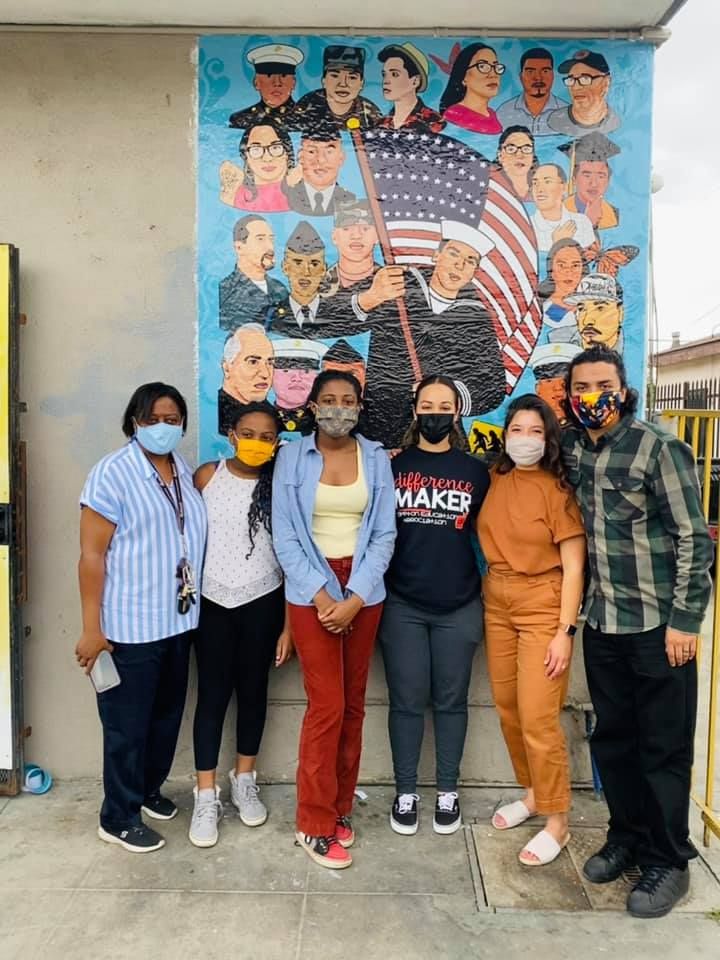Leave No One Behind Mural Project
Lizbeth De La Cruz Santana, UC Davis
Jennifer Martinez-Medina, Portland State University
Robert Vivar, Unified U.S. Deported Veterans Resource Center
Abstract
In response to immigration reform proposals’ continuous neglect of black immigrants and immigrants of color who face deportation, displacement, and illegalization by the United States, the Leave No One Behind Mural Project employs a participatory art method that prompts a shift in the discourse surrounding the repatriation of these migrant populations. The project commissioned “Deported Artists” in the creation of a series of murals that recognize the central role of knowledge, positionality, and representation in producing tangible social change while communicating a vision for ending immigrants’ criminalization. The production of the murals in Tijuana, their crossing through the US-Mexico border, and their installation in the US by allies provide a symbolic act of resilience. Art, storytelling, and social change can cross human-made borders to inhabit spaces impacted by forced displacement to cultivate discussion and collaboration.
Project Narratives
Description of project
Description of project
The Leave No One Behind Mural Project (LNOBMP) is a participatory multi-site, multi-mural, mural making and digital storytelling project that fuses the arts with community political advocacy to visualize the stories of immigrants dismissed from conversations surrounding the future of U.S. childhood arrivals. The project implements a Do-It-Yourself (DIY) method to facilitate engagement with community organizers, mural installation efforts, and calls to action. We created safe spaces for community engagement, advocacy, and healing through low to no cost mural installations.
The project was created in response to the growing numbers of immigrants that entered the U.S. as minors (‘childhood arrivals’) forcibly returned to their country of birth. Amidst a political climate and immigrant rights efforts that exclude deported childhood arrivals, the LNOBMP calls for the inclusion of previously deported childhood arrivals in discussions about immigration, specifically those regarding repatriation efforts. The project makes the case that childhood arrivals experience an entirely U.S. upbringing with exclusive ties to this country, reinforced by strong cultural and social identity. We argue that displacing childhood arrivals to a country foreign to them can cause significant emotional harm. The project proposes an inclusive approach to current debates surrounding the future of childhood arrivals and urges us to leave no one behind.
The project is co-directed by Robert Vivar, Jennifer Martinez-Medina, and Lizbeth De La Cruz Santana, who joined forces in January of 2021 to set in motion a plan to keep the Biden-Harris administration accountable to their campaign promises of 1) halting the forcible separation of families through deportation and 2) repatriating deported U.S. veterans within their first 100 days in office.
The project began its efforts by commissioning thematic murals created by lead artist Javier Salazar Rojas, a deported permanent resident from Oakland, CA, currently residing in Tijuana, Mexico. Each mural provokes a narrative linked to the experiences of deported dreamers, deported veterans, veterans who passed away in exile, voluntary returned, and undocumented childhood arrivals. The mural centers on the stories of U.S. childhood arrivals that spent most of their young and early adult life in the U.S.
As the conversation surrounding the deportation of U.S. childhood arrivals is not singular, the mural project needed to reflect diverse realities. We have elaborated seven thematic murals that portray deported, and returned immigrant communities, deported veterans, deported veterans who have passed away in exile, a mural honoring the womxn that continue to knit families together across borders, a family reunification mural, and a Black deported veterans mural.
The murals center immigrant stories through quick response (QR) codes that, when scanned, lead audiences to a digital archive where audiences can view, read, and listen to a range of testimonies. These testimonies are presented in various forms, including digital storytelling, letters, podcasts, and interviews.
The project was founded with six objectives in mind: 1) inclusivity, 2) coalition building, 3) community engagement, 4) healing, 5) political advocacy, and 6) currency of care. Together, the framework implemented for the project has supported the creation of seven thematic murals with 85 storytellers representing 11 countries.
Since the project launched, interest in the project has formed like an avalanche. We have shipped over 50 murals and made installations in 30 cities and counting. The murals are displayed across various cities in the United States, where the intersection and impact of mass incarceration and deportation have been intensely felt by the passage of the 1994 Crime Bill and the punitive Bill Clinton era immigration laws.
Moved by the detrimental effects of the current punitive system anchored by the Immigration and Nationality Act of 1965, Immigration Reform and Control Act (IRCA), and the Illegal Immigration Reform and Immigration Responsibility Act (IIRIRA), the LNOBMP Coalition-backed legislation that we believed best touched on the systemic issues that dramatically expanded the number of deportable offenses. Therefore, the mural project is underpinned by three key pieces of political action: Implement the H.R. 5383 New Way Forward Act, pass an Executive Order to repatriate deported veterans, and take concrete steps to end family separation and support family reunification.

Weaving the Movement Across Borders
The Leave No One Behind Mural Project became a tool to expand our message beyond the network of followers on Facebook and Instagram and into real action on the ground. The coalition centered efforts around real people and stories that could resonate with the public and engage the community. The installment of murals became the outlet to make everyone an activist and organizer—including storytellers (particularly for those who have been deported) and their families, activist organizations, artists, academics, and public figures. Installation events were made accessible to physical and virtual audiences bringing symbolic meaning to how the mural project defied borders. The virtual element coupled with real-life concerned people on the ground knitted a strong awareness foundation.
Milestones
The project experienced pivotal moments, building up to some impressive milestones made possible through events hosted by the coalition. These milestones helped establish the project as a legitimate, reliable, and accessible model to become engaged with various audiences.
Events
Our First Public Meeting as (discussed above) was our “community blessing” to move forward with the project. Our second major milestone was the Presidents’ Day Press Conference and Mural Launch, in which U.S. Congressman Jesús “Chuy” García was the keynote speaker. Representative Garcia’s co-sponsorship brought significant attention and legitimacy to the project. At the press conference, we unveiled our first mural featuring 21 storytellers. The event also served as a ceremony that amplified the testimony of nine individual storytellers, immigrants, and advocacy organizations that joined us in our launch, such as Trans-Border Institute at the Kroc School, Family Reunification Bring Our Deported Home, Immigrant Justice Network, Otros Dreams en Acción, Green Card Veterans, and Veterans for Peace. This moment formally brought immigrants, forcibly and voluntarily returned, veteran support movements and communities together.
The next series of milestones includes critical mural installations. Our first official mural installation in Tijuana, Baja, California, occurred on March 8, 2021. This mural was the first example of envisioning what a mural installation event could look like. Shortly after our first mural installation, we hosted installations in the U.S. in Bakersfield and Fresno, California, in April. These events were critical to motivating other community organizers, advocates, and community members to bring their murals to their community. In April, these installations were followed by hosting a press conference in Washington, DC, precisely at the end of President Biden’s first 100 days. A series of installations of Memorial Day events also helped foment movement for the project beyond the original 100 days time frame.
Inclusivity and centering storytelling as healing
Our project is driven by a commitment to inclusivity and providing opportunities to heal through storytelling.
Inclusivity
When people hear about deported veterans, they immediately react with anger and confusion. Deported veterans serve as an oxymoron, and the power of the phrase gives us an avenue by which to discuss the punitive immigration system. Suddenly people wonder why a veteran could end up deported and are immediately interested in knowing more about ways they can support veterans’ return to the U.S. Additionally; there seems to be a lack of public awareness specifically about deported veterans. The narratives about deported veterans helped build a window to recognize how many others were expelled from the U.S. despite serving or showing a deep commitment and belonging to the country. Yet, as we acknowledge that deportation is not exclusive to immigrant veterans, our approach to identifying stories relies on highlighting other groups who can be considered childhood arrivals.
Healing by centering stories
Often, deportation is a scarlet letter through the psychological stress imposed on communities who feel powerless, stripped from their identity and mobility. To best facilitate this dynamic, we targeted mural installations in the communities where storytellers were deported. We emphasized centering stories and breaking the silence by sharing testimony to drive healing.
In her seminal book, Borderlands, the queer-Xicana writer Gloria Anzaldua called the Frontera an open wound. Her metaphor for the collective pain and trauma caused by colonization, violence, and racial and ethnic othering offered a bridge to speak of vulnerability, despair, rage, and knowledge. In working through the pain and emotionality triggered by deportation and the enduring challenges that arise in collective organizing to push for change, we envision this project as an opportunity to create space for communities to begin speaking on the topic and begin pathways of healing.
Mural installation events created open dialogue between communities through platicas. Fierros, Delgado, and Bernal (2016) describe platicas as an act where knowledge is exchanged, constructed, and theorized. In all of our events, we made an effort to host storytellers depicted in the murals or their immediate families as speakers. Often, other community members would join and offer their own experiences living in interlocking systems of oppression that stem from racism, anti-Blackness, sexism, nativism, and anti-immigrant rhetoric. In creating a space for healing and actively calling on organizers and participants to take up space, these mural installation events also empowered storytellers to give words to their grievances and rethink deportation and family separation not as a given but as a nation-state practice that can be stopped. These murals became a place where storytellers, their families, and communities could reclaim their stories. We intended for the collective voices and attendees to create communities of care that sought to empower each other while healing.

Methods
To visualize the stories of childhood arrivals often dismissed from conversations about the legalization of this generation of immigrants, this project carries out the 1) creation of an open-access digital archive and 2) dissemination of stories through thematic murals. Together, we intend for these elements and practices to highlight the power of testimony by creating platforms in which storytellers can educate the public, inform policy, and support the decentralization of power.
Digital Archive
Through our method, we seek to empower communities to become changemakers, engage their networks, and support disseminating the stories that make up the project. To accomplish this goal, we created an archive of stories of cultural materials authored by storytellers. We identified storytellers through our networks and by identifying stories from preexisting archives, such as the Humanizing Deportation project. It was vital for us to seek repositories that align with our understanding of the role storytellers play in theorizing their lived experiences. We sought to engage with archives that acknowledge storytellers as the owners of their stories and the producers of knowledge. The co-directors also facilitated testimonies through various mediums such as audio recordings, letters, and digital narratives (testimonial audiovisual shorts).
Through the emphasis on centering stories, our project confronted institutional forms of power by re-rooting testimonies of storytellers that had been, to a large extent, banished or immobilized from the country. First-person testimony allows audiences to become familiar with voices representing deportation, displacement, and illegalization. This method positions the power of representation and agency in the hands of community storytellers. It provides the space for allies, scholars, and activists to participate as facilitators of the tools and platforms that can support highlighting our collaborators’ stories.
Barriers and Challenges
Despite the success of our small grassroots project, we ran into several barriers, including access to walls. Although there was plenty of excitement from community organizers, securing walls on which to post our murals was a significant barrier. Our initial strategy was to work with community organizers to identify highly public and visible walls. However, we quickly found that this strategy would not work for public spaces because either people did not want to endorse an immigration-related political statement or there were lengthy bureaucratic challenges. Yet, our community organizers found promising support from prominent female immigrant store owners who stepped up and accepted to host the murals.
Outcomes and Impact
The project’s outcomes and impact over the last 12 months have been multifold, creating a seat at the table in conversations regarding the lawful return of deported immigrants. The legal return of storytellers Robert Vivar, Andy De León, and Rocio Rebollar to the United States has been a proud moment for the project and all who support our collective efforts. These victories propel the project forward and inspire further advocacy for all childhood arrivals through art, testimonies, and public engagement. As our project name and motto assure, our efforts leave no one behind.
Bibliography
Anzaldúa, G., Cantú, Norma E., & Hurtado, Aída. (2012). Borderlands = La Frontera: The new mestiza (25th anniversary, fourth ed.). San Francisco: Aunt Lute Books.
Cindy O. Fierros, & Dolores Delgado Bernal. (2016). VAMOS A PLATICAR: The Contours of Pláticas as Chicana/Latina Feminist Methodology. Chicana/Latina Studies, 15(2), 98-121.


